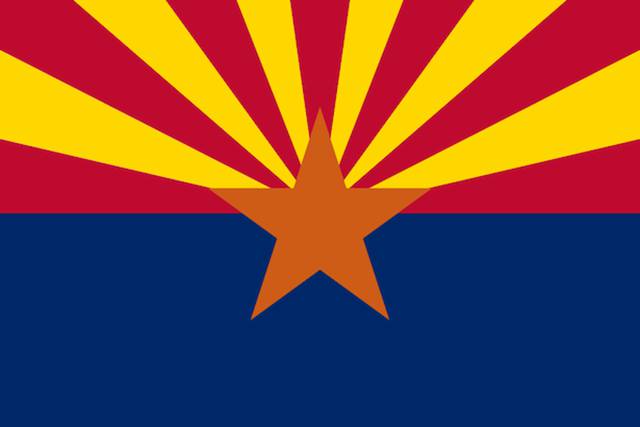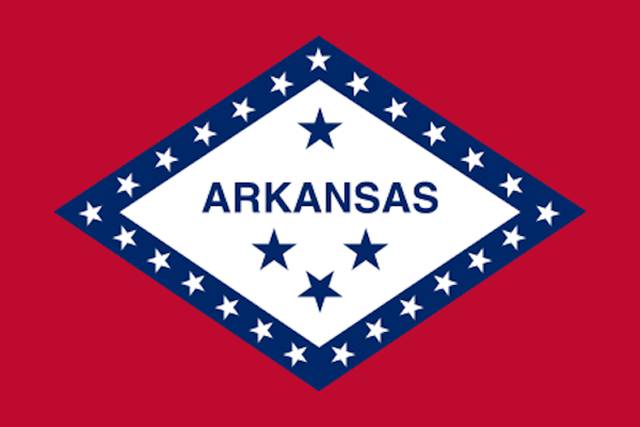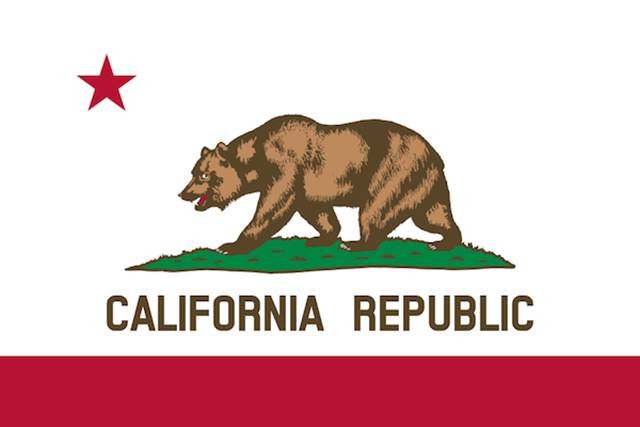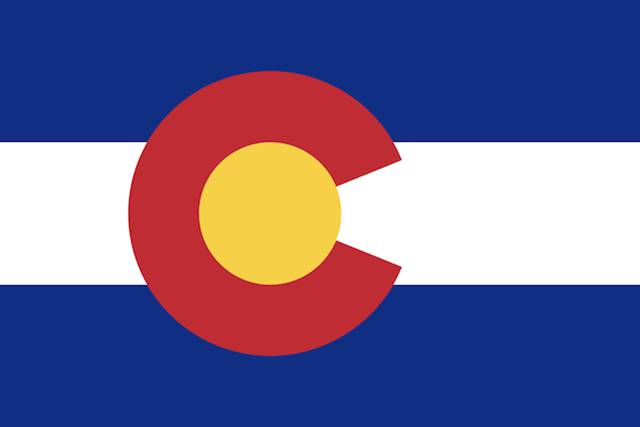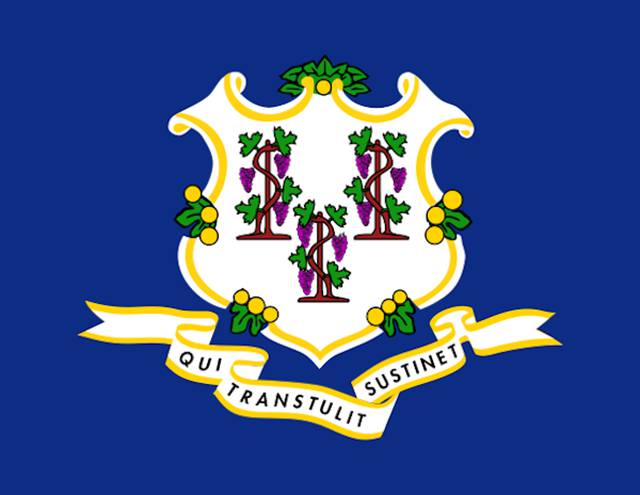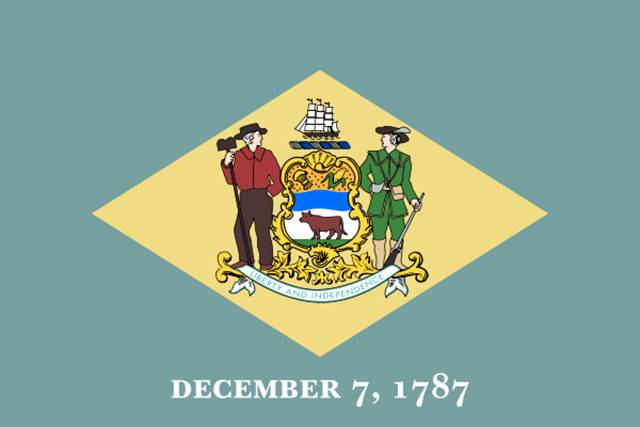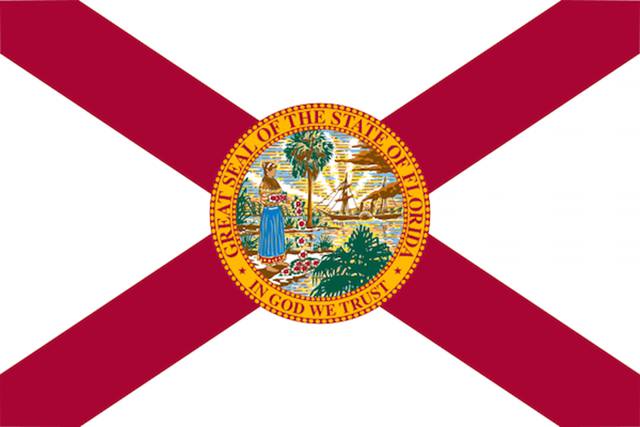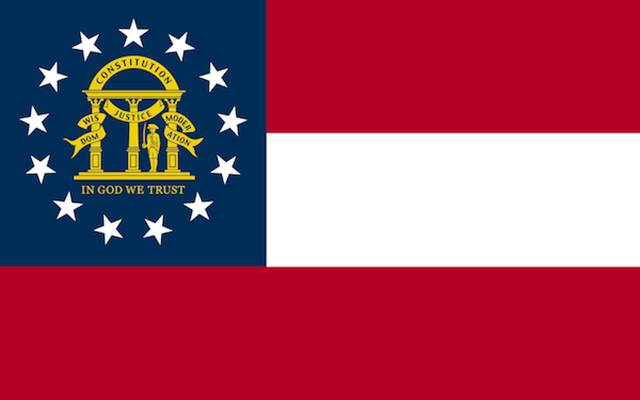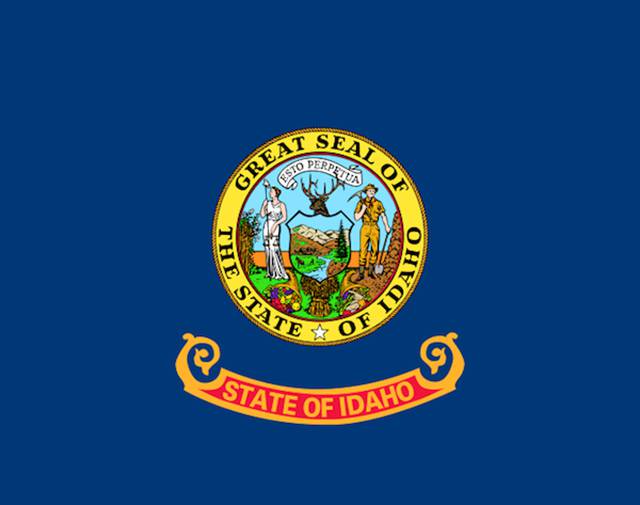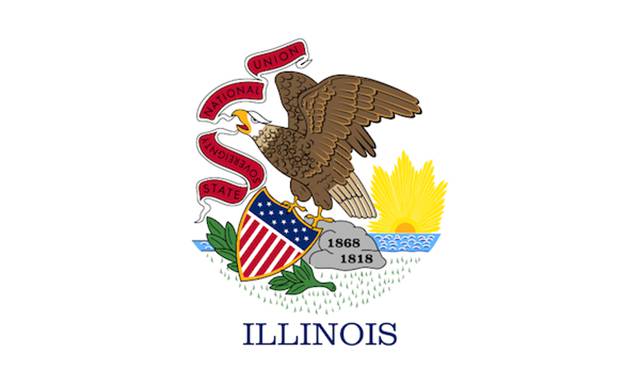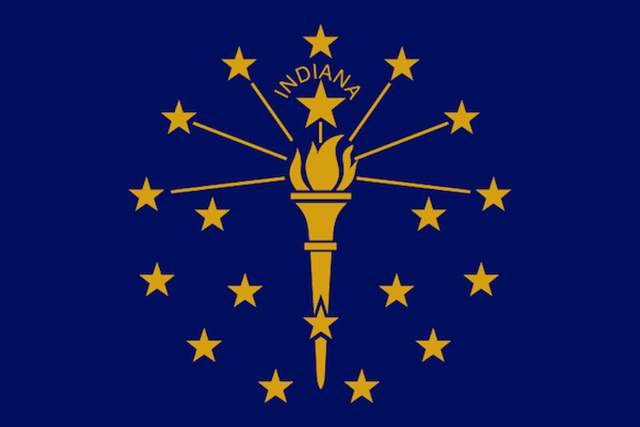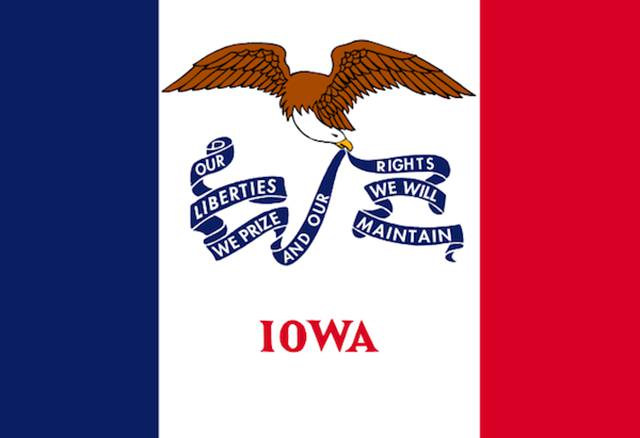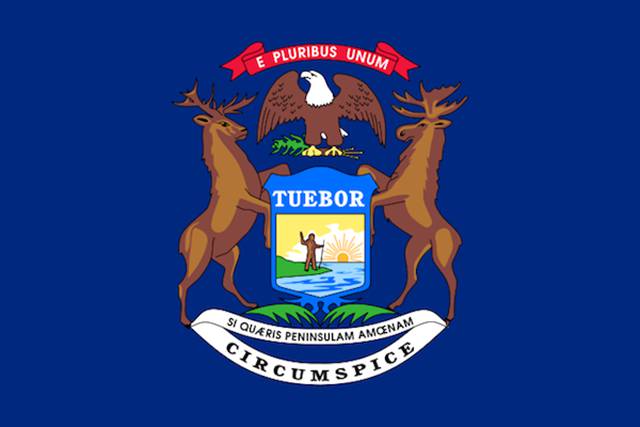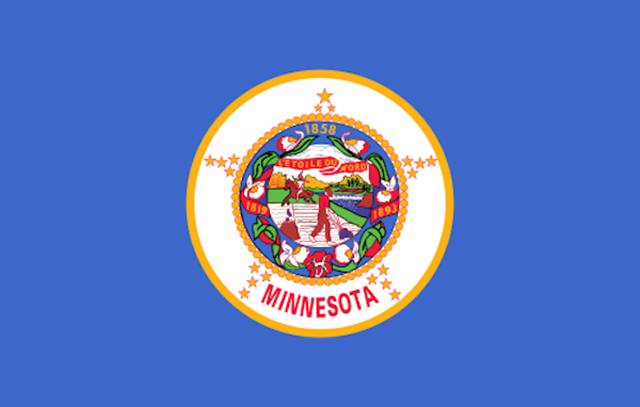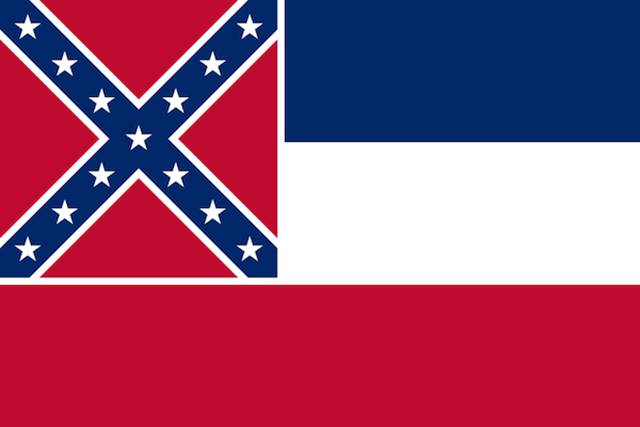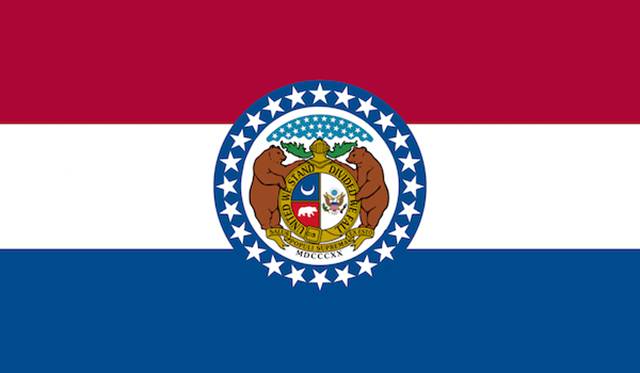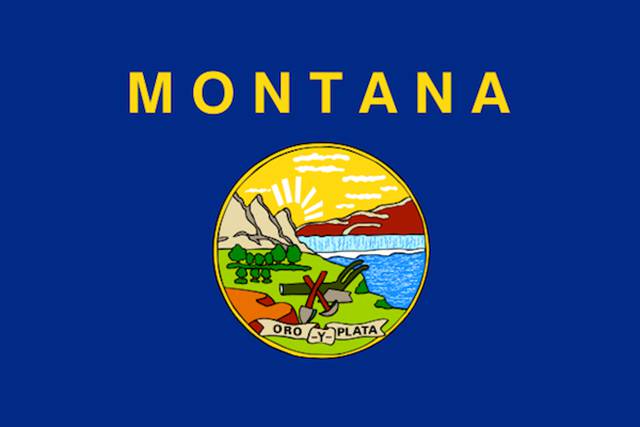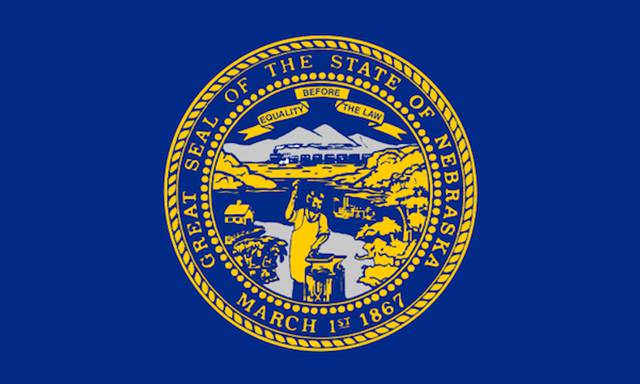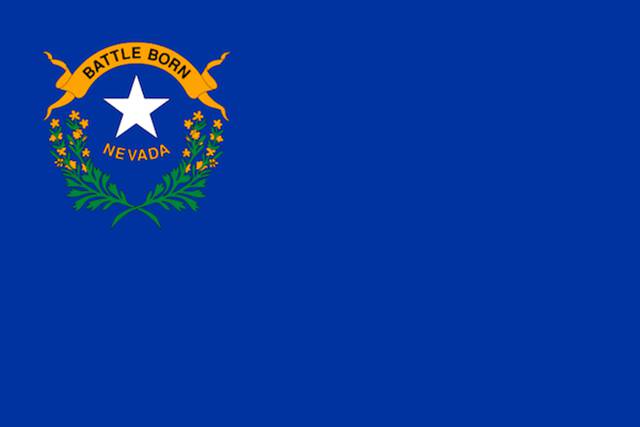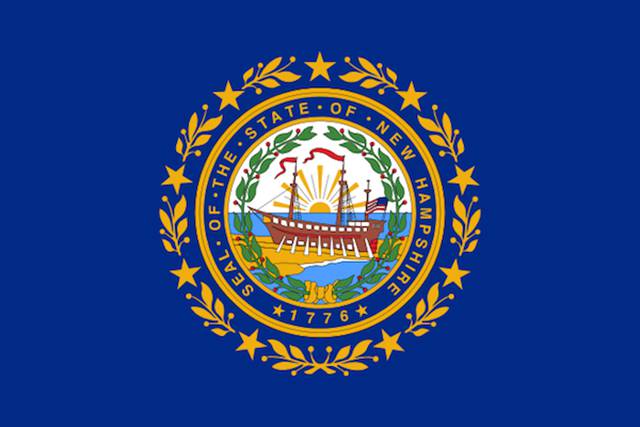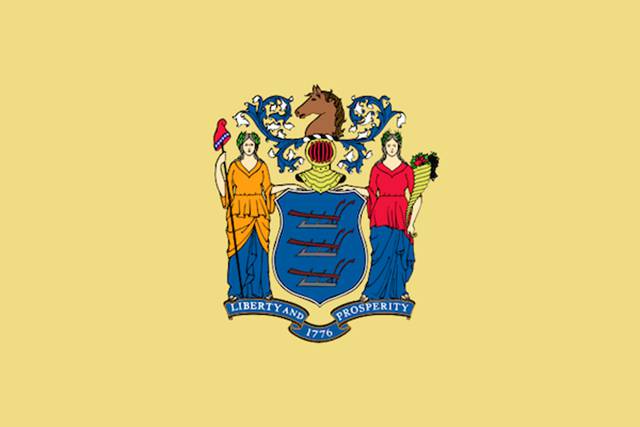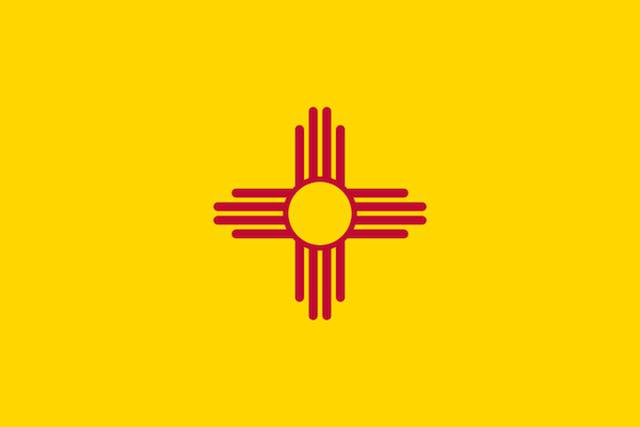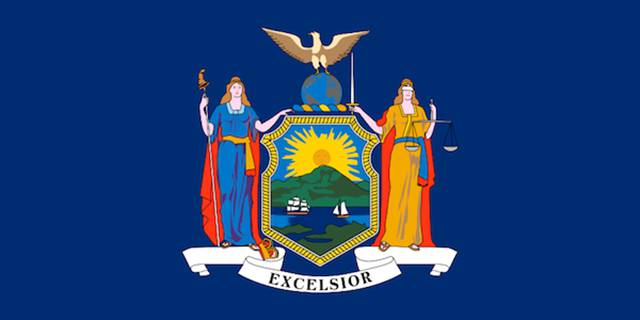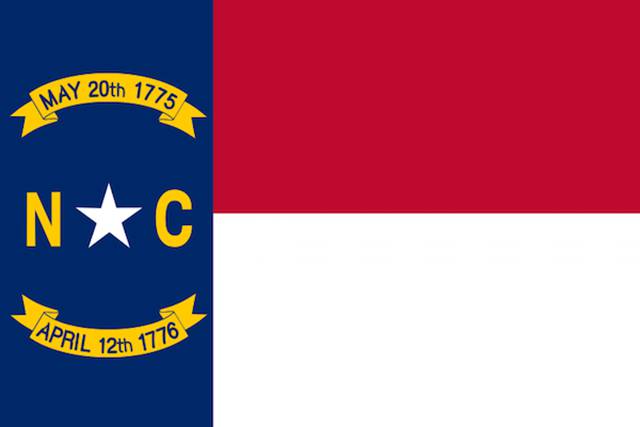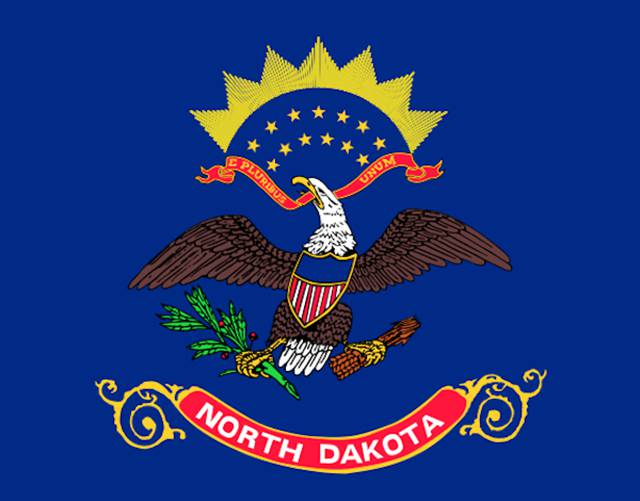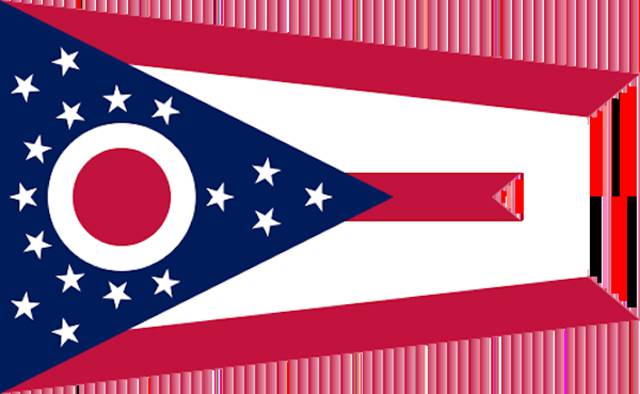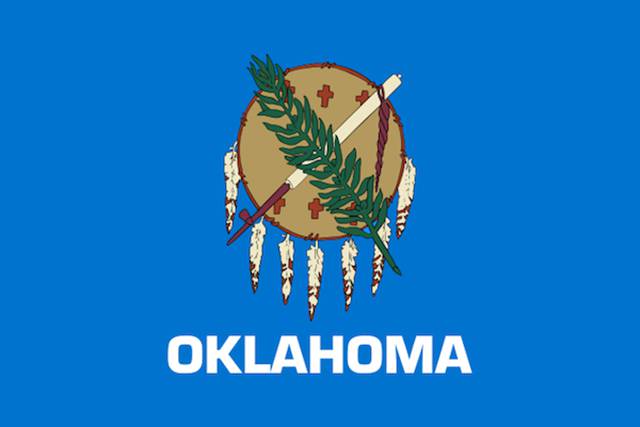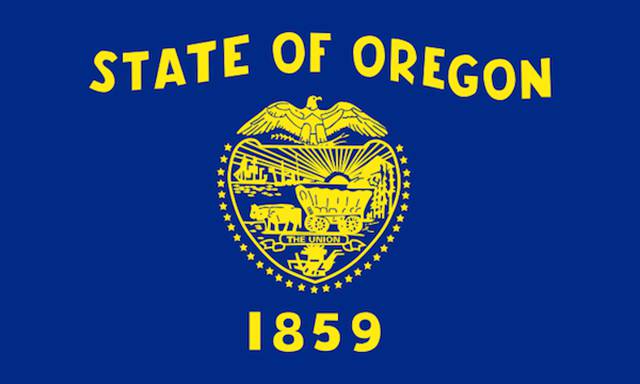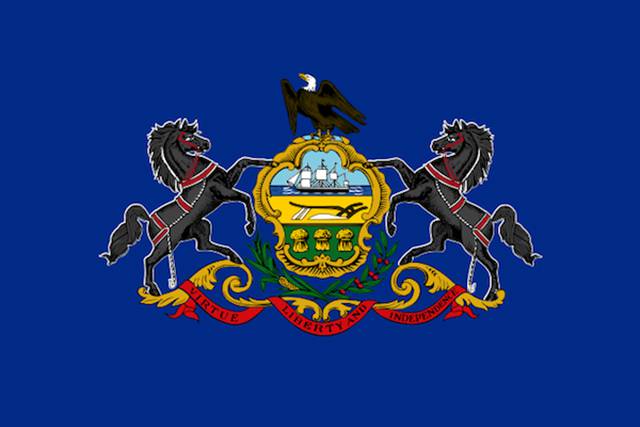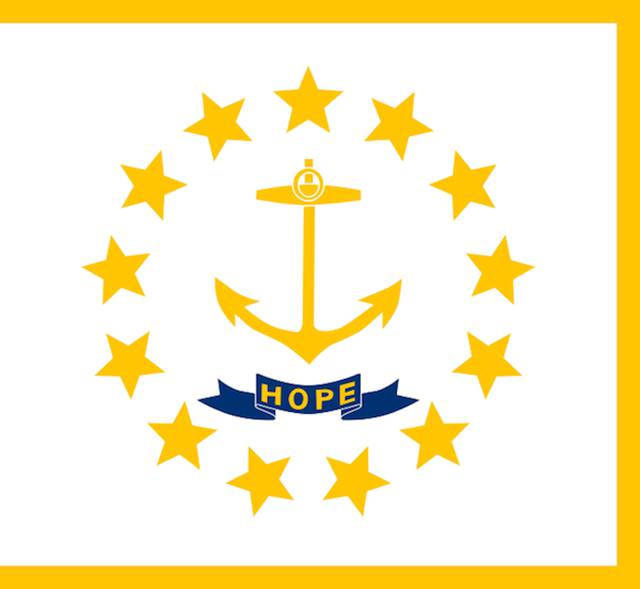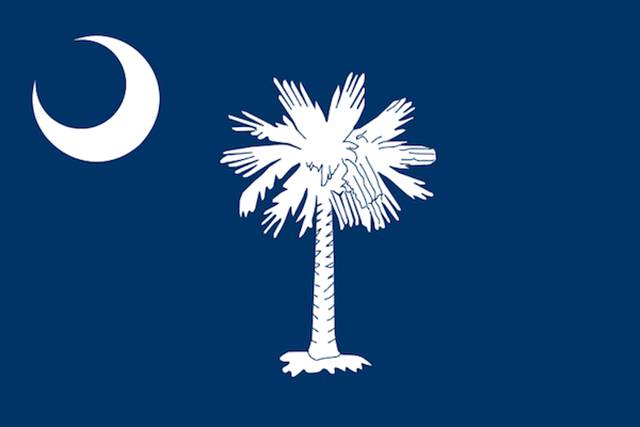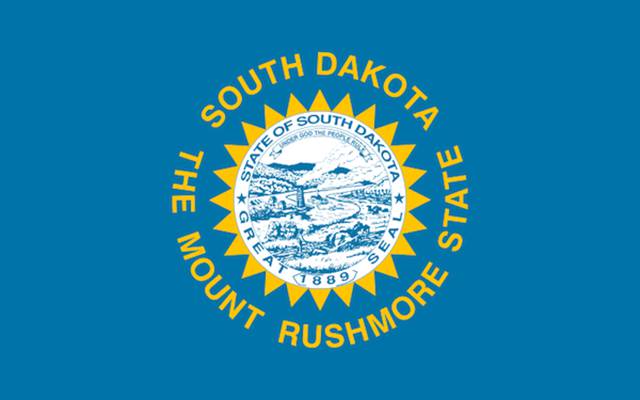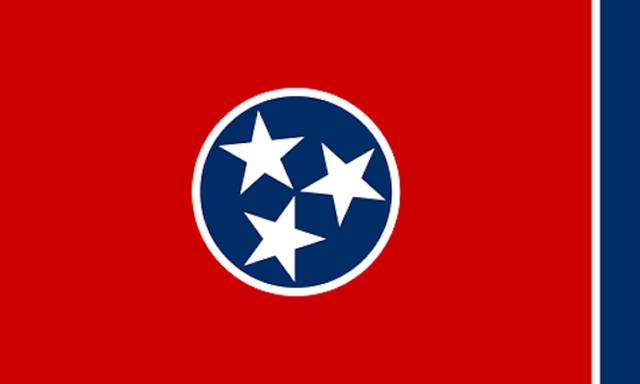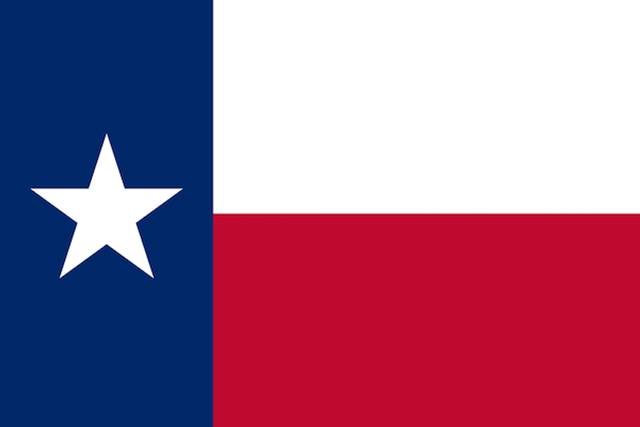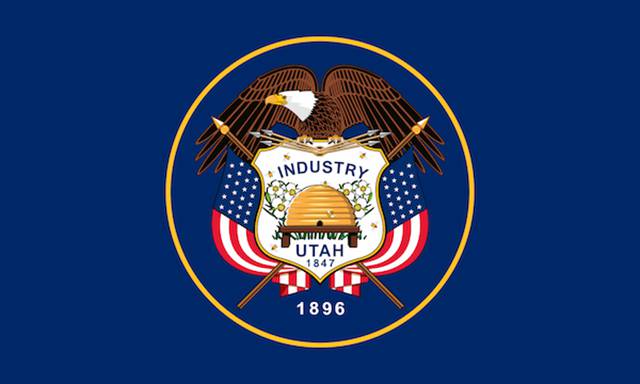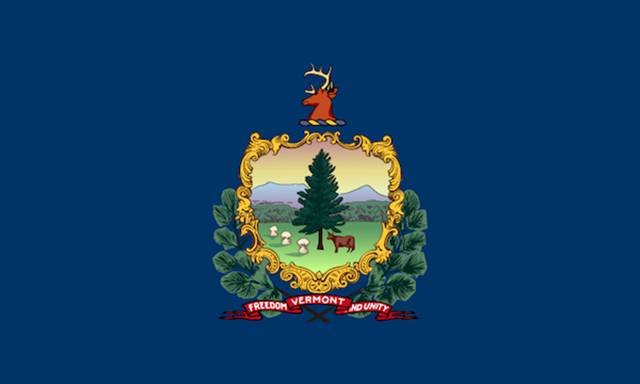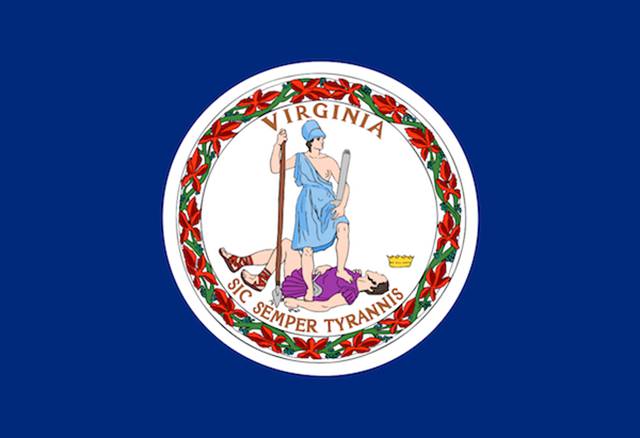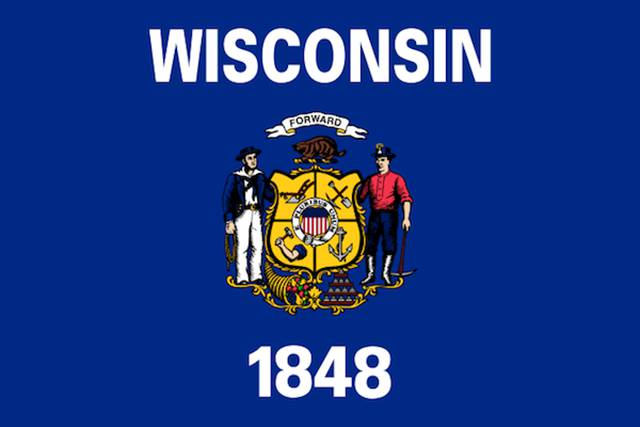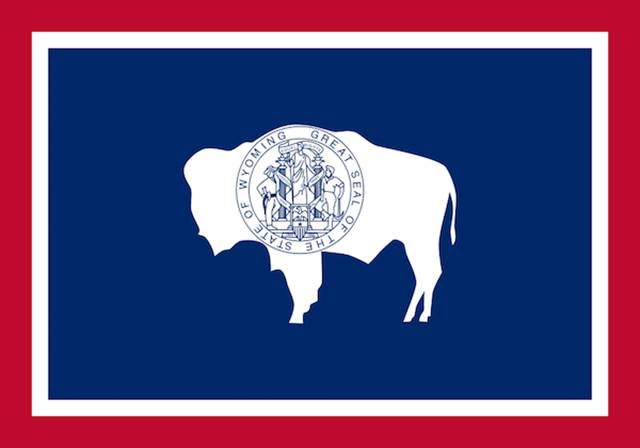Alabama
Adopted in 1895, the crimson St. Andrew’s cross on a white background design is based on the flag of the 60th Alabama Infantry Regiment of the Confederate Army.
Alaska
Designed by 13-year-old Alaska native Benny Benson in 1927 (over 30 years before Alaska became an official state), the dark blue background symbolises the sky and the seven smaller stars are in the shape of the Big Dipper (an asterism in the constellation Ursa Major, which symbolises a bear, a species native to Alaska). The solitary large star is the North Star, as Alaska is the most northerly state in the Union.
Arizona
A National Guardsman named Charles Wilfred Harris is credited with designing and implementing the basis for what would eventually become the Arizona state flag in the 1910’s. The 13 rays represent the 13 original colonies, the red and yellow colours are an homage to Spain and the copper star is in recognition of the state being the biggest producer of copper ore in the nation. The blue is the Colorado River, which runs through the state.
Arkansas
Extensively designed to fly on the USS Arkansas in 1912, a competition was held by the Daughters of the American Revolution (DAR) to find a suitable design. The flag has evolved gradually since that time, with revisions having taken place as recently as 2011.
The large diamond represents the only diamond resource in the USA (at the time of design), the 28 stars around the border as Arkansas is the 28th state, and ‘ARKANSAS’ was added just to hammer the point home. The stars in the centre have various meanings (mainly in relation to the Lousiana Purchase) but the solitary star above ‘Arkansas’ is a salute to Arkansas’ time as part of the Confederacy.
California
Based on the Historic Bear Flag flown at Sonoma in 1846, where American settlers revolted against Mexican rule. Interestingly, the bear species depicted on the flag is actually extinct, the Californian Grizzly Bear having died off in 1924. The red bar represents courage and the white purity. The star is a tribute to Texas, another state fighting against Mexican rule at the time.
Colorado
Adopted in 1964, the ‘C’s red colour represents the earth and the yellow circle is the sun. The blue bands are the sky and the white band the snow-capped mountains.
Simple enough.
Connecticut
The three grapevines represent the three original settlements as well as growth in general. Strangely and somewhat consistently among state flags, the baroque shield is not the state seal and in fact references the 1630 Saybrook Colony seal which had 15 grapevines displayed in a similar manner.
The state motto “He who transplanted still sustains” is written in Latin below.
Delaware
Adopted in 1913, the oldest state has a fairly traditional flag. The date at the bottom refers to the day that Deleware ratified the Constitution and thus became the first state in the Union. The colours of the flag are an apparent tribute to the colours of George Washington’s uniform and the details within the diamond recognise the importance of commerce (the ship) and agriculture (corn, wheat, ox, and farmer) to the state. Furthermore, the soldier is a homage to the American Revolution.
Florida
The cross is not, as is often mistakenly assumed, a reference to the Confederacy but is instead a descendant of the Cross of Burgundy (as Florida used to be a Spanish territory). The seal in the middle is a relatively new design dating from 1985, when the previous design’s seal was updated. The seal depicts the sun, a steamboat, a cabbage palmetto tree, and a Seminole woman scattering flowers.
Georgia
Georgia has changed its state flag an impressive 7 times since the Civil War, and twice since the year 2000! The current flag is actually very similar to the first Confederate battle flag (the Stars and Bars), with the red and white an homage to the Confederate soldier.
Thirteen stars represent Georgia’s place as one of the original colonies and the three pillars represent the three branches of government; legislative, judicial and executive. The man with the sword drawn is defending the Constitution, whose principles are wisdom, justice and moderation.
Hawaii
Before entering the Union, Hawaii was an independent kingdom ruled by King Kamehameha I. He ordered a flag to be created so as to reinforce the island kingdom’s relationship with Imperial Britain. The flag bears a close resemblance to the flag of the British East India Company and the influence of the king’s advisors, many of them ex-members’ of the British Royal Navy, may explain the similarities.
Other than the British flag, the 8 stripes recognise the eight major islands that make up the state.
Idaho
The state seal on a blue background. The seal depicts a woman (signifying Justice) and a Miner (Idaho’s chief industry at the time of statehood). The shield within displays the Shoshone River, with the pine tree suggesting the state’s significant timber industry. The state flower is shown near the woman’s feet and the two cornucopias refer to horticulture. The sheaf of grain refers to agriculture and the elk’s head represents game law.
FUN FACT: Idaho’s state seal is the only one designed by a woman, Emma Edwards Green in 1891. She received $100 for her trouble.
Illinois
The state emblem on a white background (for a change).
Designed to emulate the seal of the United States, the eagle holds the state motto in its beak, reading “State Sovereignty, National Union”. The two dates on the seal, 1818 and 1868, refer to the year Illinois became a state and the year that the seal was redesigned respectively.
Indiana
The gold torch symbolises Liberty. The 19 gold stars due to Indiana being the 19th state. The outer 13 for the 13 original colonies.
Iowa
A clear homage to the French Tricolour, as the state used to be part of the French Louisiana Territory. The eagle holding the state motto is lifted directly from the state’s seal.
It was designed in 1917 by Dixie Cornell Gebhardt, who was a member of… the Daughters of the American Revolution.
Kansas
Adopted in 1927 (the ‘KANSAS’ was added in 1961), the flag depicts the state seal with a sunflower above it (Kansas being the Sunflower State).
The seal itself has plenty of illustrative designs, all telling the history and cultural ethos of Kansas. The wagon train represents pioneer spirit, the rising sun represents the east, and the plough agriculture. Furthermore, commerce is embodied by the steamboat and Native Americans can be seen hunting American Bison.
The 34 stars are for Kansas being the 34th state to enter the Union and the Latin motto translates as “To the Stars through Difficulty”.
Kentucky
The state seal is surrounded by sprigs of goldenrod, the state flower. The two figures embracing are supposed to be a pioneer (believed to be legendary woodsman Daniel Boone) and a salesman (supposedly statesman Henry Clay). The state motto “United We Stand, Divided We Fall” circles them.
Louisiana
The flag depicts what is known as a “pelican in her piety,” that is a mother pelican wounding her breast to feed her young from the blood. The pelican’s shape also recalls the fleur-de-lis, a symbol prominent in Louisianan cultural history.
The current flag has been in circulation since 2010, a revision of a similar flag dating back to 1912.
Maine
The state arms on a blue background (the blue must be the same as the national flag).
The arms depict both a farmer and a seaman, a nod to the state’s reliance on both agriculture and fishing. The North Star represents the state motto: Dirigo or ‘I Lead’. A moose, Maine’s official state animal, is seen sitting below a pine in the middle of the shield.
Maryland
This is a good flag.
Previously, Maryland had gone down the state seal on blue background route before changing it to the more chivalric heraldry that we recognise today.
The black and gold parts of the flag belong to the personal banner of George Calvert (1579 – 1632), the first Baron of Baltimore. Calvert believed in creating a settlement where Catholics and Protestants could coexist in relative peace and Maryland was hoped to be that place. The red and white design is the coat of arms of the Crossland line, Calvert’s mother’s family heraldry.
Massachusetts
The flag of the Commonwealth of Massachusetts features the state shield, depicting an Algonquian Native American with bow and arrow; the arrow is pointed downward, signifying peace. The right arm on top of the shield alludes to the state motto depicted in Latin at the bottom, meaning ” By the Sword We Seek Peace, but Peace Only Under Liberty”.
The star refers to Massachusetts admission as the sixth U.S state.
Michigan
Although the wheels are in motion to change the flag as of November 2016, the current (and third) iteration of the flag has existed since 1911. The elk and moose echo the coat of arms of the Hudson’s Bay Company and bald eagle represents the United States. The Latin inscriptions are as follows; “TUEBOR” mean “I will defend”, “Si Quæris Peninsulam Amœnam Circumspice,” means “If you seek a pleasant peninsula, look about you” (The official state motto), and “E Pluribus Unum,” means “Out of many, one,” a motto of the United States.
The man in the shield has a raised hand representing peace and holding a long gun representing the fight for state and nation as a frontier state.
Minnesota
State seal on a blue background.
The French inscription translates to “The Star of the North” and the flowers around the edge are the lady slipper, the state flower. The three dates woven into the seal refer to the year Minnesota became a state (1858), the year Fort Snelling was established (1819), and the year the official flag was adopted (1893).
The 19 stars represent Minnesota being the 19th state to enter the Union after the original 13.
Mississippi
The only state flag to include the Confederate battle flag. The stripes refer to the original CSA (Confederate States of America) flag. A referendum in 2001 failed to produce a replacement.
Missouri
Very similar to Iowa, the flag contains the state seal surrounded by the colours of the French flag (another homage to the French Territory). The stars (both in and around the edge of the seal) represent the number of states in 1821.
Montana
Originally deployed by Montana troops during the Spanish/American War, it was officially adopted in 1905. The state seal is central to the flag, with the ribbon reading “Oro y Plata” (Spanish for “Gold and Silver”).
The bold exclamation of “MONATANA” was added in 1981, with a font change quickly following in 1985.
Nebraska
ANOTHER state seal on a blue background.
The seal depicts a blacksmith working in the foreground, a steam train in the background, and a steamboat going down the Missouri River. At the top of the seal a banner holds the motto “Equality Before the Law”, and around the outer ring of the seal contain the text “Great Seal of the State of Nebraska, March 1st, 1867”.
Nevada
The emblem in the upper left corner contains a silver star (for the Silver State) and the motto “Battle Born’, referencing the state’s creation due to the Amercian Civil War. The sagebrush (the state flower) sits below.
New Hampshire
Oh look, another state seal!
The seal depicts the frigate USS Raleigh (one of the first 13 warships sponsored by the Continental Congress for a new American navy, built in 1776) and surrounded by laurel wreaths.
New Jersey
The coat of arms depicts the female figures of Liberty and Ceres, with the three ploughs representing the state’s agricultural tradition. Designed in 1777 by Pierre Eugene du Simitiere, the streamer at the bottoms depicts the state’s motto “Liberty and Prosperity” and the year of statehood, 1776.
New Mexico
Introduced in 1925, the flag’s design is centered around the red sun of the Zia, a reference to the state’s Native American Pueblo and Nuevo México Hispano roots. The red and gold colours are an homage to Spain, with the Cross of Burgundy and Crown of Aragon clear influences.
New York
State coat of arms on a blu…you get the idea.
Lady Liberty stands to the left, a Liberty cap on top of her staff and a discarded crown (representing the casting off of British rule) at her feet. Justice stands to the right, the goddess representing the equal treatment of all under the law. ‘Excelsior’, the state motto (translated from Latin as “Ever Upward”), sits below a shield displaying ships sailing the Hudson River. The eagle on top of the globe refers to the Western expansion of Empire.
North Carolina
Another flag heavily influenced by the Confederacy (a continuous theme in Southern state flags), the top date on the left refers to the day of the Mecklenburg Declaration of Independence and the bottom date refers to the day the Halifax Resolves took place ie. succession from the British.
North Dakota
The central eagle alludes to the great seal of the United States of America. The banner in the eagle’s mouth reads “One nation made up of many states” and the stars represent…yep, the 13 original colonies.
Ohio
The only state flag that is a swallow-tail pennant, Ohio designed its flag in 1902 for the Pan-American Exposition in Buffalo (where President William McKinley, a native of Ohio, was assassinated…although I’m sure that was just a coincidence).
The central circle resembles both an ‘O’ and a buckeye nut. The triangle is for the hills and valleys, 13 stars on the left for the original 13 colonies, and the 4 stars on the right as Ohio is the 17th state. The stripes represent the roads and waterways.
Oklahoma
The state has carried various unofficial designs during its history, with the current flag only getting official recognition in 2006. Based off of a 1925 design by Daughters of the American Revolution (them again), the ‘OKLAHOMA’ was added in 1941 to combat illiteracy.
The Osage Nation buffalo-skin shield is covered by two symbols of peace; the olive branch for European Americans and the Plains-style ceremonial pipe for Native Americans. The blue references the battle flag carried by the Chowtaw during the American Civil War.
Oregon
The only state flag to be double sided (a small yellow beaver is on the reverse. It’s great, take my word for it), it was created in 1925 and follows many of the same rules as many of the other flags on this list. The 33 stars represent Oregon’s admission as the 33rd state and 1859 is the year as the year it gained statehood.
Pennsylvania
The coat of arms of Pennsylvania is, unsurprisingly, central to their flag. The ship represents commerce, the wheat agricultural fertility, and the plough rich natural resources. An olive branch and cornstalk symbolise peace and prosperity. The eagle on top suggests the states absolute loyalty to the Union.
FUN FACT: Although authorised in 1799, it wasn’t until 1907 that the flag was standardised, requiring the blue field match the blue of “Old Glory”.
Rhode Island
The Ocean State, hence the Anchor. The 13 stars? Take a wild guess!
South Carolina
Dating all the way back to 1775, the South Carolina state flag has always contained the crescent moon in one form or another. The palmetto tree was added in 1861 in reference to their use in the defence of Sullivan’s Island in the American Revolutionary War.
South Dakota
The flag spells it out for you. Fairly self-explanatory.
The state seal is surrounded by the state’s name and nickname. Previously, before 1992, “THE SUNSHINE STATE’ was written in place of “THE MOUNT RUSHMORE STATE”.
Tennessee
The three stars in the middle of the flag represent the three Grand Divisions of the state, East Tennessee, Middle Tennessee, and West Tennessee. The blue circle surrounding them symbolises their unity. The blue bar on the side is just that, a blue bar! The flag’s designer even admitted as much, saying “The final blue bar relieves the sameness of the crimson field and prevents the flag from showing too much crimson when hanging limp”.
Design is important!
Texas
Introduced by Senator William H. Wharton in 1838, the Lone Star Flag is arguably the most iconic of all the state flags. The red and white stripes refer to the small and ultimately doomed Republic of Fredonia, an attempt of succession from Mexico in 1826 that was quickly quelled. The white refers to the Anglo rebels and the red to the Native rebels involved in the rebellion. The star represents unity and has come to embody Texans’ independent spirit.
Utah
State seal on a blue background.
The beehive and the word “Industry’ represent progress and hard work. The flowers are the sego lily, the state flower. 1847 refers to the year the Mormons entered the Salt Lake Valley, and 1896 the year Utah became the 45th state in the Union. The eagle represents war and peace and the American flag is featured as an intentional pledge of allegiance to the nation (The Mormons weren’t given statehood until 40 years after the founding of Utah due to a perceived lack of loyalty to the Union as a whole).
Vermont
Adopted in 1923, it replaced a flag that was the same as that of The Green Mountain Boys, a military regiment that is now the Vermont National Guard. On the current flag, the pine tree in the centre represents the Vermont forests and the cows/wheat sheaves the agricultural industry. The deer atop is a nod to the Vermont wildlife and the state motto,’Freedom and Unity’, refers to two very different ideals, the freedom of the individual, and the welfare of the common good.
Virginia
The state seal against a blue whale/background.
The seal depicts the personification of Virtus, a Roman embodiment of virtue. She stands victorious, the personification of Tyranny under feet. Tyranny is, in this instance, Britain, the Crown on the floor next him representing the throwing off of Monarchy and the birth of the Republic.
Virtus holds a spear in one hand (down to represent a battle already won) and a parazonium in the other, a sword of authority rather than combat.
West Virginia
Officially adopted in 1962, the white represents purity and the blue the Union. The coat of arms sits in the middle wreathed by Rhododendron maximum, the state flower. The Latin inscription within the arms reads “mountaineers are always free” and the phrase “June 20, 1863”, seen written on a boulder in the centre of the arms, refers to the state’s entry into the Union. The miner and farmer refer to the state’s industry, while the two crossed hunting rifles and a Phrygian cap (or “Cap of Liberty”) illustrate the importance of the state’s fight for liberty.
Washington
Another flag influenced by the Daughters of the American Revolution, who were incremental in its design, the green is due to it being the Evergreen State and George Washington is depicted because I shouldn’t have to explain to you why George Washington is on the flag of Washington state. Read a book!
FUN FACT: Due to the seal having to be stitched on both sides of the flag, it is the most costly state flag to produce.
Wisconsin
Another flag with military origins, it was designed in 1866 for battlefield units on deployment. Only in 1913 did the state officially implement statutes for its official creation.
The state coat of arms sit in the middle, with the badger (state animal) atop. A sailor and miner represent the state’s economy and within the shield four main state industries are displayed: Mining, agriculture, manufacturing and navigation.
The ‘WISCONSIN’ and “1848” (year of statehood) were added in 1981 to set the flag part from the various other similar state flags.
Wyoming
The red border for the blood of the pioneers and natives, the white for purity, and the Bison because Wyoming has a fuck tonne of Bison. All topped off with the state seal in the middle.



